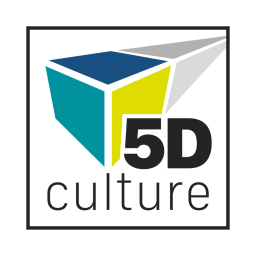Exploring the Future of Fashion Heritage
The pivotal collaboration between the European Fashion Heritage Association (EFHA) and The Centraal Museum within the EU-funded project "5Dculture" inspired EFHA to centre their annual conference on the theme of digital tools employed for the preservation and exhibition of fashion heritage. The "Future Heritage" conference took place on 27-28 November 2023, bringing together diverse experts to exchange insights and visions in this domain.
Held in the heart of Utrecht, the conference aimed to examine the role of new technologies in making fashion heritage future-proof. One of the central themes of the conference was the integration of technology and digital advancements into the preservation and promotion of cultural heritage. Attendees engaged in thought-provoking discussions on leveraging virtual reality, augmented reality, and artificial intelligence to enhance our understanding and experience of historical artefacts and sites. From interactive exhibits to immersive virtual tours, participants explored innovative ways to bridge the gap between the past and the present.
Day 1: Research, Collect, Connect - what makes the future of Fashion Heritage?
The first day’s panel, ‘Research, Collect, Connect: Imagining the Future of Fashion Heritage’, featured presentations that delved into groundbreaking projects and studies:
Federica Vacca from Politecnico di Milano discussed the use of digital technologies in studying the legacy of the Italian architect/couturier Gianfranco Ferré.
Sabine De Guenther from the Fachhochschule Potsdam explored the 'Restaging Fashion' project, presenting a visualization prototype for vestimentary sources.
Elisa Palomino (Smithonian NMNH) and Jonathan Katz showcased a 3D simulation of a fish skin parka from the Anchorage Museum.
Martina Ponzoni and Daniele Scarante introduced d_archive, an innovative platform focused on preserving fashion heritage with digital technologies.
Kate Irvin (RISD Museum) and Joy Ko (RISD Virtual Textiles Research Group) introduced the work they are doing in Rhode Island to reflect and reproduce Virtual Textiles, understood as objects with a new materiality and as sites of sensory experiences that can be felt and communicated in different ways.
Closing day one, Debra Knoop discussed ModeMuze's impressive work connecting artists, digital creators, curators, and conservators to display digital museum collections.
Day 2: Exhibit, Represent, Transform - Innovations in Fashion Heritage Spaces
On the second day, the panel, ‘Exhibit, Represent, Transform: New Experiences for New Spaces’, focused on a series of case studies mapping out projects and exhibitions with digital innovation for fashion heritage at their core: EFHA presented the 5Dculture discuessed ‘5D culture. Can fashion heritage be(come) immersive?’ and delved into the technical and conceptual aspects of the two pilots in development in the realm of fashion heritage: the Virtual fitting room and Social fashion VR. The first leverages on the previous experiences of Centraal Museum Utrecht in utilising 3D historical objects and AR solutions to extend the use and enjoyment of fashion collections beyond the museum's physical spaces. The second scenario is a bit more complex and addresses issues that curators face when dealing with historical garments and accessories with conservation issues and proposes an alternative display technique to avoid problems related to exhibiting physical objects. EFHA’s presentation explored the process, technical aspects, technological tools, and implementation of both pilots, and the public - made mainly of museum professionals and university professors and students - reacted enthusiastically.
Suzanne Mulder from Studio PMS and Centraal Museum presented her work on the exhibition “From Pattern to Polygon” - which inspired the work EFHA is conducting within the 5Dculture project.
Isabelle D’Arcy from London College of Fashion invited the audience to explore speculations on the potential future of fashion heritage and exhibitions.
Mairi MacKenzie from The Glasgow School of Art showcased the capitavting digital exhibition on Fashion and Textiles in the Life and Work of the Artist Steven Campbell.
Charlotte Stachel, from USI – Università della Svizzera italiana, introduced the exhibition on Bally’s history and archive on Google Arts & Culture.
Luca Missoni connected from Milan and showcased the AR/VR technologies implemented in the Missoni archive.
All in all, the tone of the second day was set by the keynote speech by Roger Gerards from AMFI. His brilliant contribution demonstrated how the Amsterdam Fashion Institute is at the forefront of connecting traditional craft with digital techniques and tools, leading the way towards a phygital fashion education, that can prepare students to work in a competitive, hybrid system.
Beyond the Podium: Fostering Collaboration and Networking
More than presentations and discussions, this conference provided a platform for professionals across diverse fields to network and collaborate. Opportunities for cooperation were explored, spanning fashion history, conservation, technology, and education. EFHA had the chance to introduce 5Dculture to a wide and specialised audience, reflect on other initiatives sharing core aims and objectives, and learn from one another. Indicating a positive affirmation for the 5Dculture project, participants expressed keen interest to stay updated on the project's progress.



